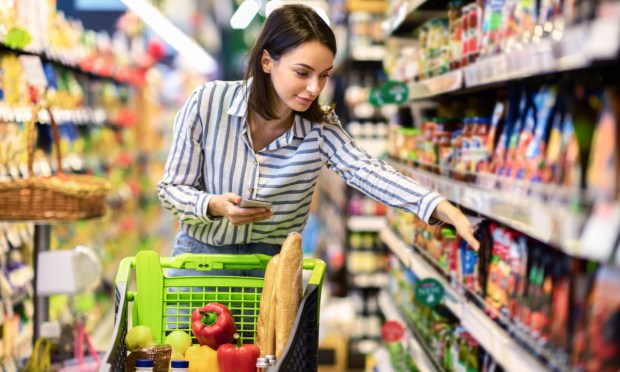Grocers Go All-in on Advertising as Inflation Cuts Into Margins

This week in grocery, Kroger looks to boost its margins with its new in-house advertising platform, Dollar Tree pushes past the one-dollar price point with new frozen food options, and Tops Markets expands eCommerce access for low-income consumers.
Kroger, the United States’ leading pure-play grocer, is expanding its retail media business, Kroger Precision Marketing (KPM), with the launch of an in-house advertising platform with self-service listing capabilities for brands, as 84.51°, the grocer’s data science firm, announced Wednesday (June 28).
“Retailers are creating the consumer-first future of advertising,” Cara Pratt, senior vice president of Kroger Precision Marketing, said in a statement. “We know we need to remove friction from the retail media buying process. Building a new foundation of integrated technology empowers brands and agencies to maximize retail media’s potential.”
The move comes as grocers, helped by the growth in their eCommerce channels, look to sell their data to brands to boost margins, as ongoing inflation eats into their profits. On the company’s earnings call earlier this month, Kroger Chief Financial Officer Gary Millerchip cited “growth in retail media” as one of the “many components” of the grocer’s “strategy to improve margin over time.”
The advertising platform includes sponsored product listings, on-site display ads and other retail media initiatives to come.
Dollar Tree Expands $5 Frozen Grocery Selection
Kroger is far from the only retailer making major moves to adjust for grocery inflation. Last week, in its 2023 Investor Conference presentation, major discount chain Dollar Tree announced that it has been expanding its food options that go above the chain’s $1.25 primary price point.
Specifically, the company noted that its frozen foods selection, with $3, $4 and $5 options, was available at more than 3,900 stores as of the end of last quarter (April 29) and that, throughout the rest of this year, the retailer will be expanding this selection to 1,600 more stores.
The news comes as consumers, facing ongoing grocery inflation, increasingly turn to discount retailers to meet their food needs.
PYMNTS’ study “Consumer Inflation Sentiment Report: Consumers Cut Back by Trading Down” surveyed more than 2,000 U.S. consumers about their experiences and perceptions in shopping. The study revealed that 47% of grocery customers have switched to cheaper merchants for at least one grocery product.
Year-over-year grocery inflation may be back down to the single digits, but this is on top of double-digit increases last year. Consumer Price Index (CPI) data released earlier this month by the Bureau of Labor Statistics (BLS) revealed that, in May, grocery inflation was at 5.8% year over year on top of 11.9% last year.
Tops Adds SNAP EBT Payments for Discount Food Marketplace Flashfood
Supermarket chain Tops, which has about 150 locations in the Northeast, has added the ability to accept Supplemental Nutrition Assistance Program (SNAP) Electronic Benefits Transfer (EBT) to its offerings on the app Flashfood, which offers discounts on foods getting close to their expiration or best-before dates.
As Progressive Grocer noted, the supermarket chain is accepting these benefits via third-party payment processor (TPP) Forage, with consumers picking up their Flashfood purchases at designated areas in Tops stores.
“As a company committed to feeding more families, we’re thrilled to expand our partnership with Flashfood and launch EBT as an online payment method for Tops Friendly Markets,” Forage Co-founder and CEO Ofek Lavian said, according to the report. “We are proud to help provide access to affordable, healthy groceries for low-income Americans that continue to struggle with the realities of food insecurity and inflation.”
The news comes as grocers try to boost digital engagement with lower-income consumers. Findings from PYMNTS’ study “Changes in Grocery Shopping Habits and Perception,” which drew from a survey of more than 2,400 U.S. consumers, showed that 57% of consumers who earn more than $100,000 annually purchase at least some grocery products online, and 47% of those who earn $50,000-$100,000 said the same. In contrast, only 33% of those who earn less than $50,000 do so.

